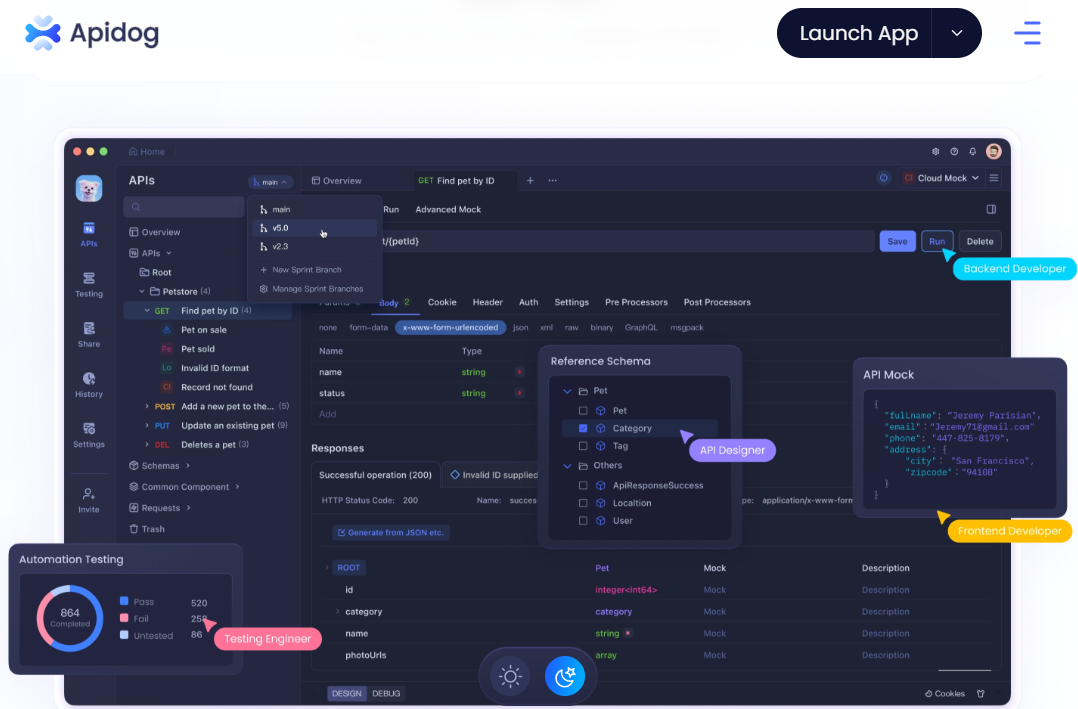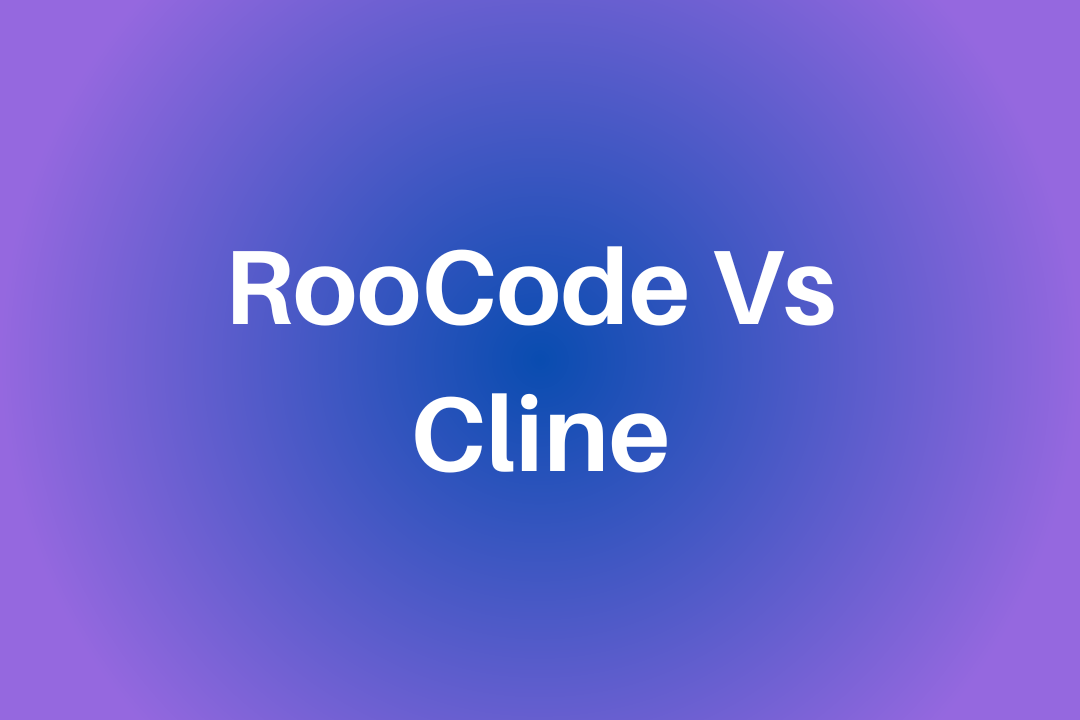If you’re knee-deep in the wild world of AI-assisted programming, you’ve probably stumbled across Roocode and Cline. These two tools are like the Batman and Superman of VS Code extensions—both awesome, but with their own superpowers. Today, I’m breaking down Roocode VS Cline in a chill, conversational way to help you figure out which one’s your perfect sidekick. Let’s dive in!

What Are Roocode and Cline, Anyway?
Picture this: you’re coding in Visual Studio Code, and you’ve got an AI assistant that provides helpful suggestions every step of the way. That’s the vibe with both Roocode and Cline. They’re extensions that plug into VS Code, turning it into a turbocharged, AI-powered beast. But while they share some DNA (Roocode started as a fork of Cline), they’ve each carved out their own lane.
- Cline: The OG. It’s all about being a reliable, straightforward assistant—think of it as the friend who’s always got your back with solid code generation and task execution.
- Roocode: The rebellious sibling. It took Cline’s foundation and jazzed it up with extra features, flexibility, and a “let’s try everything” attitude.
So, how do they stack up? Let’s break it down.
Roocode VS Cline: Features Face-Off
What Cline Brings to the Table
Cline keeps it simple but powerful. Here’s what you get:
- Code Writing: Tell it what you want, and it’ll whip up code snippets or edit entire files.
- Command Execution: It can run terminal commands for you—just approve the move first.
- Manual Control: Every step needs your nod, so you’re always in the driver’s seat.
It’s like a trusty Swiss Army knife—does the job, no fuss. Perfect if you’re new to AI coding or just want something predictable.

What Roocode Adds to the Mix
Roocode takes Cline’s core and cranks it to eleven. Here’s the scoop:
- Multiple Modes: Code, Architect, Ask—pick your vibe. Want to brainstorm architecture? Architect mode’s your jam. Just chatting about code? Hit Ask mode.
- Customization: You can tweak prompts and create custom modes to fit your workflow like a glove.
- Fancy Extras: Browser automation, diff-based edits (not whole-file rewrites), and support for a ton of AI models like Google Gemini or DeepSeek.
Roocode’s like that friend who’s always got a wild idea—and half the time, it’s genius.

Ease of Use: Roocode VS Cline Showdown
Getting Started with Cline
Cline’s a breeze to set up:
- Install it from the VS Code Marketplace.
- Pop in an API key (say, from Google Gemini or OpenAI).
- Start typing prompts—it’s ready to roll.
It’s beginner-friendly and sticks to the basics. If you’re not into tinkering, Cline’s your guy.
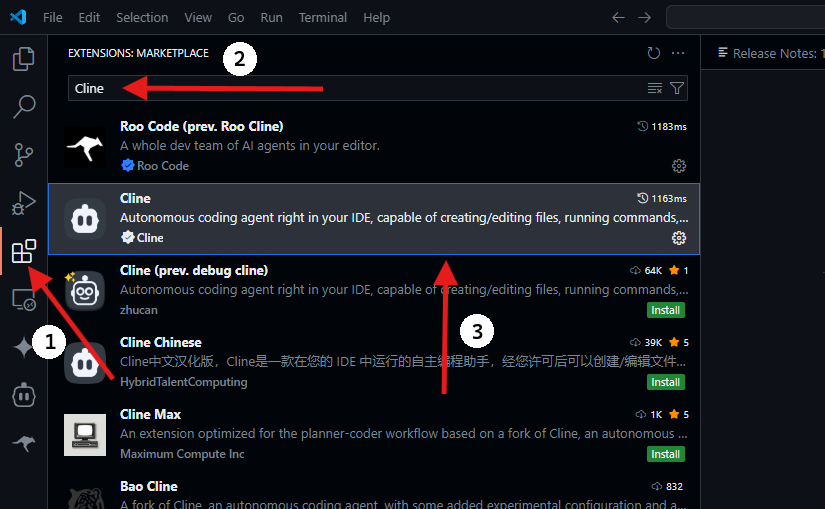
Jumping into Roocode
Roocode’s setup is similar but with more flair:
- Grab it from the Marketplace (search “Roo Code”—two words now!).
- Add your API key.
- Pick a mode or customize it—dive into settings if you’re feeling adventurous.
There’s a bit more to play with, so it might feel overwhelming at first. But once you get the hang of it, it’s smooth sailing.
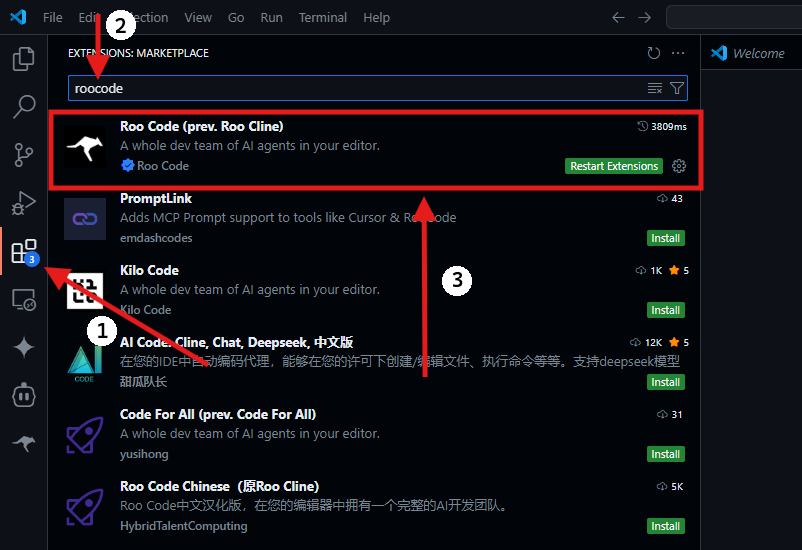
Cline’s Exclusive Goodies: Features Roocode Doesn’t Have
Alright, let’s talk about some stuff Cline flaunts that Roocode can’t touch—especially when it comes to the MCP (Model Context Protocol) game. These extras might just make Cline your go-to if you’re into plug-and-play power.
The Cline MCP Marketplace: One-Click Superpowers
Cline’s MCP Marketplace is like an app store for your AI assistant. Imagine browsing a catalog of tools—web scraping, database queries, GitHub integration—and adding them to Cline with a single click. No manual setup, no fuss. Roocode supports MCP servers too, but it doesn’t have this slick marketplace. With Roocode, you’re hunting down servers on GitHub or building them yourself—more DIY, less “grab and go.” Cline’s marketplace launched in early 2025, and as of April 08, 2025, it’s packed with goodies like the Supabase MCP server for database magic. It’s a game-changer if you want instant access to new tricks.

Ease of MCP Server Configuration with Cline
Setting up MCP servers in Cline is stupidly easy. Pick a server from the marketplace, click install, and Cline handles the cloning, setup, and config updates (like tweaking cline_mcp_settings.json) behind the scenes. You just approve the changes, and boom—it’s running. Roocode? You’re more on your own. You’ve got to manually add server configs to mcp_settings.json or a project-specific .roo/mcp.json, and there’s no hand-holding. Cline’s one-click installs and auto-configuration make it a breeze, especially for non-tech wizards who just want results. Roocode’s MCP setup is powerful but leans harder into the “figure it out” vibe.

These Cline exclusives don’t mean Roocode’s slacking—it’s just got a different flavor. Cline’s all about streamlining the experience, while Roocode hands you the keys to customize everything. If you’re into instant gratification and MCP magic, Cline’s got the edge here.
Roocode’s Unique Tricks: Features Cline Doesn’t Have
Alright, let’s get into the juicy stuff—some standout features Roocode brings to the table that Cline doesn’t touch. These extras might just tip the scales for you, especially if you’re after flexibility and control. Here’s the lowdown, straight from the feature playbook.
Modes: Roocode’s Superpower Unleashed
When it comes to modes, Roocode is like a DJ spinning multiple tracks, while Cline sticks to a simpler playlist. Check this out:
- Default Modes: Roocode rolls with Code, Debug, Architect, and Ask—giving you a Swiss Army knife of options. Cline keeps it lean with just Plan and Act. Want to brainstorm app architecture? Roocode’s Architect mode has your back; Cline’s Plan mode is more basic.
- Custom Modes: Roocode lets you craft your own modes—think “Test Writer” or “UI Planner”, most notably Boomerang. Cline? No dice—you’re stuck with what you get.
- Per-Mode Tool Selection: With Roocode, you can pick specific tools for each mode (like a linter for Debug). Cline doesn’t offer that granularity.
- Granular Mode-Specific File Editing: Roocode lets you tweak files differently depending on the mode—super handy for big projects. Cline edits files the same way, no matter what.
- Slash Command Mode Switching: Roocode’s got a slick
/switchcommand to hop between modes fast. Cline makes you click around instead. - Project-Level Mode Definitions: Roocode lets you set mode rules for an entire project—consistency city! Cline’s modes are more one-size-fits-all.

Both tools let you pick models per mode and write custom prompts, and they’ve got keyboard switching and auto-switch toggles. But Roocode’s mode game is next-level if you love tailoring your workflow.
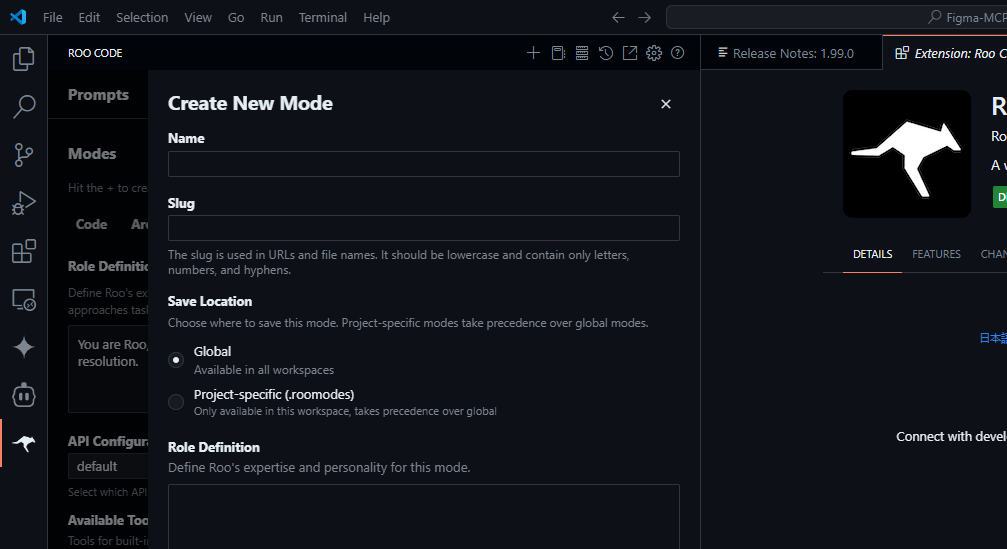
Browser Use: Roocode’s Web Wizardry
Roocode doesn’t just code—it surfs the web, too. Cline’s more of a stay-at-home coder. Here’s how they differ:
- Remote Browser Connection: Roocode can connect to a browser and automate tasks—like filling forms or scraping data. Cline doesn’t venture online.
- Screenshot Quality Adjustment: Need a crisp screenshot for your docs? Roocode lets you dial in the quality. Cline’s not in the screenshot biz.
- Viewport Size Adjustment: Roocode can tweak the browser viewport size for testing responsive designs. Cline skips this entirely.
Cline does have one browser edge—you can set a custom browser path, which Roocode doesn’t bother with. But if you’re into browser automation, Roocode’s the clear champ here.
Why This Matters
These features make Roocode a powerhouse for coders who want more than just code generation. Modes let you juggle complex projects with ease, and browser tools open up a world beyond the editor. Cline keeps it simpler, which isn’t a bad thing—it’s rock-solid for straightforward coding tasks. Just because Cline doesn’t pack these extras doesn’t mean it’s not awesome in its own right—it’s still a killer tool for getting stuff done!
Performance (RooCode vs Cline): Who Codes Faster?
Cline’s Speed and Stability
Cline’s all about consistency. It’s not the flashiest, but it gets stuff done without drama. Need a quick script? It’ll churn it out, though it might rewrite whole files when a small tweak would do. It’s steady, but sometimes token-hungry if you’re using big models.
Roocode’s Power Play
Roocode’s a speed demon when you lean into its modes. Architect mode plans fast, Code mode executes quick, and diff-edits save time over Cline’s full-file approach. Plus, it’s got smarter token management—handy if you’re on a free API tier. The catch? More features can mean more bugs, though the team’s squashing them fast.
Roocode VS Cline: Which One’s for You?
Pick Cline If…
- You’re new to AI coding and want something simple.
- You love total control over every edit or command.
- You’re cool with a leaner feature set that just works.
Go for Roocode If…
- You’re a tinkerer who loves customizing your tools.
- You juggle big projects and need task-splitting or brainstorming help.
- You want cutting-edge extras like browser automation or multi-model support.
The Final Verdict: Roocode or Cline?
Honestly, it’s less about “better” and more about “better for you.” As of April 08, 2025, Cline is the safe bet for simplicity and reliability. Roocode steals the show if you crave flexibility and next-level features. Try both—they’re free to install—and see which vibe clicks. Got a fave already? Let me know what you’re building with it!
